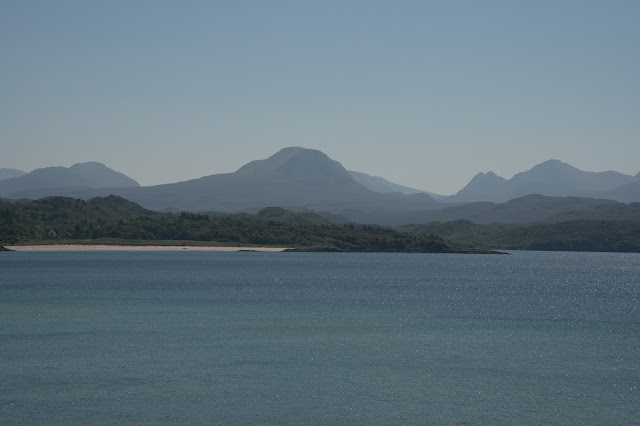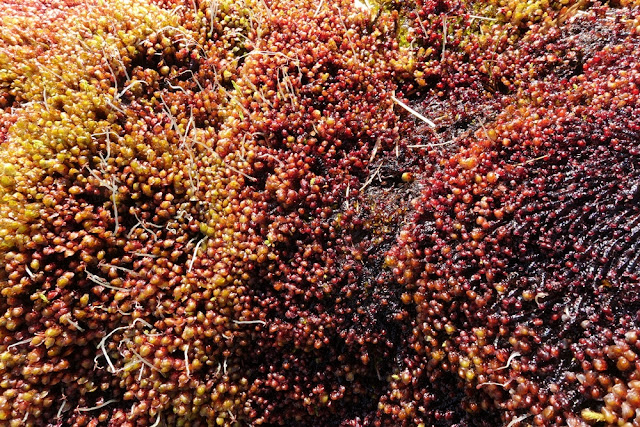Last days in the Highlands - 2019
Two images of Coire an t-Sneachda in the Cairngorms. The shot on the left above was taken in the first week of May this year when I first arrived in Scotland. The second was taken in the first week of July, just before I left. I spent the last few days of my trip counting broods of ptarmigan in various hills in the area, as part of a long-term study of ptarmigan breeding numbers.
Most of the ptarmigan chicks were about three weeks old, like the one above. It looks well feathered, although there is still a lot of downy feathers beneath the newly grown body and flight feathers. They grow a set of juvenile wing feathers in their first week, which enables them to fly short distances away from predators, even at such a young age. The feathers on their back help to keep them waterproof; hence warm and dry.
This adult female was watching over her brood as I approached. Three of the chicks flew about 100m around the hillside, three remained hiding in the herbage. Different adoption of tactics, which in itself is a good strategy for at least some of a brood to escape a predator. Once I moved on, she began calling them up and the whole brood were soon gathered together again and carried on feeding.
This was one of the chicks that stayed in hiding. It was only two metres from me, and so were the other two. They were very difficult to pick out as they lay motionless, watching me all the time, ready to fly if they had to.
Watching, relying on camouflage, seemingly casual, but underneath its legs would have been ready to jump and its wings ready to burst into rapid flight.
So I left them all to carry on as they were. They seldom wander more than a few metres from rocks. Such is their well-adapted lifestyle. By sitting close to rocks they blend in so well, looking like just another moss-covered rock.
And there are lots of moss-covered rocks in the hills.
Like those in this high spring above a corrie. The mosses drape down the waterline for over 100m, creating a rich wet flush of plant growth. This is a good feeding habitat for ptarmigan chicks which eat the moss capsules, the flower and leaf buds of waterside herbs and insects that live in the rich ground and water cover. There are two dominant colours in this spring, green and red.
The lush green cushions are of
Philonotis fontana, the well-named Apple Fountain Moss.
The bright green of this moss stands out bright on the hillsides, always attracting my eye. Yet when looked at more closely, the details of the moss leaves and capules are even more enchanting.
And its partner, the red liverwort,
Scapania undulata, Water Earwort. Such a wonderful name. Those folds of lobes are full of water and the whole, both the green and red cushions, are very spongy.
There were lots of cranefly,
Tipula monata, walking over the mosses and liverworts; excellent food for young ptarmigan.
A wonderful little piece of specialist habitat in a special place, the Cairngorms.






















































